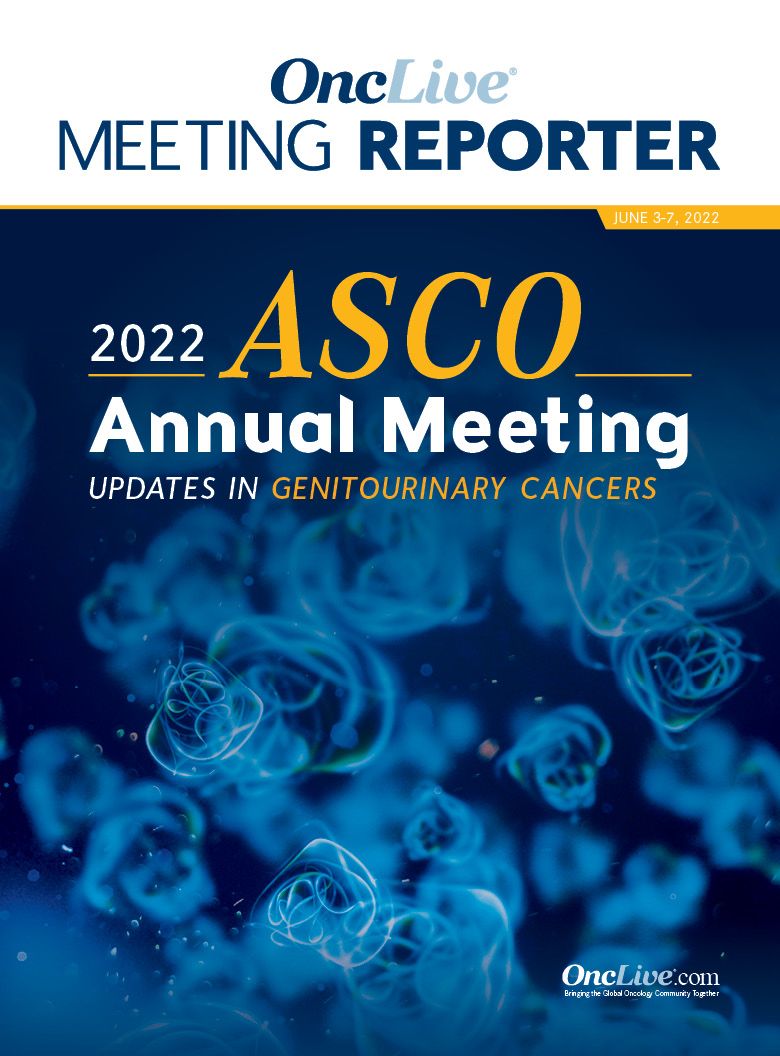Publication
Article
Supplements and Featured Publications
Single-Agent Cabozantinib Stalls as Maintenance Therapy in Advanced Urothelial Cancer
Author(s):
Results of the ATLANTIS study do not support further investigation of cabozantinib alone as a maintenance therapy after platinum-based chemotherapy in unselected patients with advanced urothelial cancer.
Robert J. Jones, MA, PhD, MBChB

Maintenance therapy with cabozantinib (Cabometyx) in patients with advanced urothelial carcinoma failed to elicit a statistically superior response compared with placebo, according to findings from a cohort in the ATLANTIS umbrella study presented at the 2022 ASCO Annual Meeting.1
The median progression-free survival (PFS) was 13.7 weeks (80% CI, 12.1-23.3) with cabozantinib vs 15.8 weeks (80% CI, 11.3-23.6) with placebo cabozantinib (HR, 0.89; 80% CI, 0.61-1.30, 1-sided P = .35). The median overall survival (OS) was 75.5 weeks (80% CI, 43.4-117.6) with cabozantinib vs 82.9 weeks (80% CI, 58.0-117.1) with placebo.
Median duration of treatment was 13 cycles for cabozantinib vs 10 cycles for placebo. Overall response rate was 3.3% for cabozantinib vs 6.5% for placebo.
Robert J. Jones, MA, PhD, MBChB, who presented the data, noted that although the hazard ratios were slightly in favor of cabozantinib, both P values were not significant. “Future trials should consider combining novel agents with maintenance immunotherapy,” said Jones who is a professor of clinical research at the University of Glasgow Institute of Cancer Sciences in Glasgow, Scotland.
“Though underpowered, this study does not support further investigation of cabozantinib alone as a maintenance therapy after platinum-based chemotherapy in unselected patients with advanced urothelial cancer,” he added.
The ATLANTIS trial included patients with advanced urothelial carcinoma who underwent 4 to 8 cycles of first-line chemotherapy, during which time they were prescreened for tissue-based biomarkers. Patients with ongoing clinical benefit after chemotherapy were offered randomization into one of several substudies based on biomarker status. Patients with a DNA repair deficiency were randomized to rucaparib (Rubraca) vs placebo, patients who were androgen receptor biomarker positive were randomized to enzalutamide (Xtandi) vs placebo, and patients who were “all biomarkers negative” received cabozantinib or placebo.
Patients in the cabozantinib arm received 40 mg once daily vs matching placebo. The primary end point was PFS. Secondary end points included OS, confirmed response rates, and safety and tolerability.
Recruitment was discontinued after 61 patients were randomized due to a United Kingdom-wide recruitment hiatus beginning in March 2020 because of the COVID-19 pandemic, and also because of data presented in June 2020 supporting the use of avelumab (Bavencio) in the maintenance setting.2 The trial’s power was subsequently revised to 72.3% from an original value of 90%.
Regarding safety, adverse events seen more commonly in patients receiving cabozantinib vs placebo included fatigue (56.7% vs 32.2%, respectively; P = .02), hypertension (43.3% vs 12.9%; respectively, P = .01), nausea (30% vs 19.4%, respectively; P = .36) and diarrhea (40.0% vs 6.5%; respectively, P < .01).
“Notably, 43% of patients receiving cabozantinib had to reduce the dose from 40 to 20 mg, although there were no treatment discontinuations due to toxicity,” Jones said.
Jones also noted that negative patient selection for DNA repair deficiency and androgen receptor biomarkers may have biased interpretation of the findings.
References
- Jones RJ, Hussain SA, Birtle AJ, et al. A randomised, double blind, phase II clinical trial of maintenance cabozantinib following chemotherapy for metastatic urothelial carcinoma (mUC): final analysis of the ATLANTIS cabozantinib comparison. J Clin Oncol. 2022;40(suppl 170):LBA4505. doi:10.1200/JCO.2022.40.17_suppl.LBA4505
- Powles T, Park SH, Voog E, et al. Avelumab maintenance therapy for advanced or metastatic urothelial carcinoma. N Engl J Med. 2020;383(13):1218-1230.doi:10.1056/NEJMoa2002788









